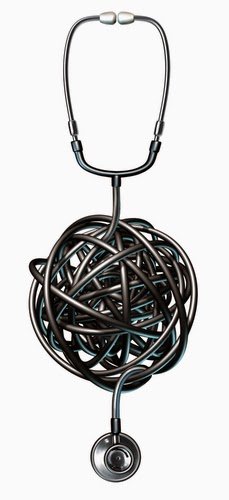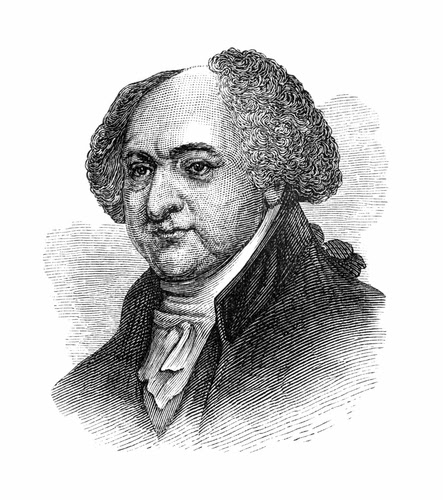
During one Emergency Department (ED) shift, EMTs brought in an older woman to the hospital. She had called emergency medical services (EMS) and explained that she had low blood sugar, or hypoglycemia. Hypoglycemia can lead to coma, brain damage, and death as well as other more minor symptoms such as tremors and sweats. But when the EMTs arrived to pick this woman up, her blood sugar levels were normal — there was no emergency at all. In fact, as she admitted once she was in the back of the ambulance, she only called EMS because she had run out of glucose strips, which diabetic patients use to monitor their blood sugar. A family medicine doctor can easily procure these for a patient, and running out of these strips in no way constitutes a medical emergency. Once this woman got to the ED, the physicians drew her blood for labs, examined her, and measured her blood sugar again in order to make sure there was no emergency.
In another instance of misused resources, a middle-aged gentleman called an ambulance because, supposedly, he could not walk. However, the patient was able to get himself up from the stretcher and climb onto the ambulance, which his daughter said was normal behavior for him. He received a full workup in the ED with labs and x-rays. Similarly, a mother brought her son into the ED because he needed a full physical before playing sports. The ED physicians spent time speaking to the patient, doing a physical exam and drawing basic labs to look at his blood.
These kinds of situations occur daily — we squander emergency medical resources on non-acute medical conditions. Sadly, emergency physicians and EMTs do not have a choice in the matter, which can be disheartening in a system where resources are precious. And while there are many factors affecting inefficient emergency medical care, we have a law to blame for at least some of the daily inefficiencies — EMTALA (the Emergency Medical Treatment and Labor Act).
Congress passed EMTALA in 1986 with Ronald Reagan’s signature, ensuring, among other things, that patients requesting emergency medical care receive it regardless of their ability to pay. In a 2001 article published in the Baylor University Medical Center Proceedings journal, Dr. Joseph Zibulewsky puts the law in perspective. In 1986 and 1987, case studies from Cook County Hospital in Chicago described how other hospitals transferred patients to Cook County because the patients could not pay for their care, a practice known as “patient dumping.” The studies concluded, as Dr. Zibulewsky writes, that “this practice was done primarily for financial reasons.” In fact, “the reason given for the transfer by the sending institution was lack of insurance in 87% of the cases.” Moreover, the patients who were transferred were twice as likely to die as those who were not transferred. Nor were these isolated events: “This practice was not limited to Chicago but occurred in most large cities with public hospitals. In Dallas, such transfers increased from 70 per month in 1982 to more than 200 per month in 1983.” As a result of widespread patient dumping, EMTALA was signed into law.
EMTALA consists of three basic tenets all of which must be followed regardless of a patient’s insurance or financial status. First, any person who presents to the hospital for medical care must receive a medical screening examination (MSE) to ensure that there is no emergency medical problem. As the law reads:
if any individual (whether or not eligible for benefits under this subchapter) comes to the emergency department and a request is made on the individual’s behalf for examination or treatment for a medical condition, the hospital must provide for an appropriate medical screening examination within the capability of the hospital’s emergency department, including ancillary services routinely available to the emergency department, to determine whether or not an emergency medical condition…exists.
As the examples at the beginning of this post illustrate, no matter what a patient comes in with, an emergency medical condition must be ruled out, so a medical workup must be performed. Additionally, the ED must “provide such medical treatment of the condition as may be necessary to assure, within reasonable medical probability, that no material deterioration of the condition is likely to result from or occur during the transfer of the individual from a facility.” In other words, the patient’s condition must be stabilized before discharge. If the hospital is not equipped to care for a particular medical condition, the hospital must transfer the patient to another hospital capable of providing the needed care.
And all this does not just apply to ED physicians. Any specialist consulted by the ED (in fields like neurology or psychiatry) must see the patient within 30 to 60 minutes of being called. EMTs are also beholden to this law. As Zibulewsky explains, an “appeals ruling in Hawaii has extended this [EMTALA] to virtually any ambulance, even those run by city or county services.”
Thus, once a patient is in an ambulance, he or she “can be considered to have come to the ED.”
 |
| Image via Shutterstock |
Hospitals and physicians face stiff consequences for failing to abide by EMTALA. The law applies only to those hospitals and physicians who participate in Medicare, which nearly all of them do. And if the hospital violates EMTALA, reimbursements can be taken away. On an individual level, physicians can be responsible for up to $50,000 in civil court if they violate the law. Given how many hospitals and doctors receive reimbursements from Medicare and how much money hospitals receive from Medicare (hundreds of billions of dollars), it behooves institutions to follow EMTALA as best they can.
Unfortunately, the law is incredibly problematic for many reasons. In the first place, vagueness abounds: what counts as a medical screening examination? Is it just a physical exam? Is it just a history of the patient’s present illness? Must a CT scan be included? This is completely nebulous. Also, what counts as stabilized? If a person is bleeding to death with a broken leg and a physician stops the bleeding and casts the leg, can the patient be discharged without a follow-up appointment with a physician? If the trauma has left someone severely debilitated and is surviving only on a ventilator, is it now the hospital’s responsibility to find an acute care nursing home and continuous care for this patient? Does the hospital keep the patient in the ICU and eat the cost indefinitely?
Furthermore, the law adds population burden and financial cost to a floundering medical system. A 2008 article by Dr. Damon Dietrich and Dr. Michael Crapanzano concluded that while “EMTALA was intended to provide all patients the right of medical care in the ED regardless of ability to pay, a cost: benefit analysis performed by Duke University…suggests it did just the opposite.” Moreover, “EMTALA actually impedes access for an EMC [emergency medical condition] by overwhelming resource capacity.” Many people who come to the ED actually need emergency medical care, not just glucose strips. And putting time and resources into non-emergency care takes away resources and time from emergency care. Also, because care is “free” in the ED, patients have no qualms about coming in whether their problems are or are not acute. In turn, this leads to overcrowding. Some statistics, though not proven to be a direct consequence of EMTALA, demonstrate the severity of the problem. In 2001, “two out of every three hospitals reported diverting ambulances to other hospitals” due to ED overcrowding. Additionally, “ED visits in 2003 rose to 114 million, up from 97 million in 1997.” This overcrowding with uninsured patients costs the hospitals and its patients tremendous amounts of money. As a result, emergency rooms close, further exacerbating the problem of ED overcrowding. Between 1988 and 1998, 1,128 EDs closed, leading to dramatic increases in patient volumes and waiting times at other EDs.
Then, of course, there is the financial burden. An ambulance ride itself can cost over a thousand dollars. Also, the authors of the Duke study estimated that EMTALA has a net cost on hospitals, government agencies, and social welfare that runs in the billions of dollars. We thus have good reason to think that EMTALA places financial strain on our medical system as well.
But it’s not just patient care and hospital emergency rooms that are negatively affected by this law. According to the American College of Emergency Physicians, ED doctors “on average provide $138,300 of EMTALA-related charity care each year, and one-third of emergency physicians provide more than 30 hours of EMTALA-related care each week.” Unfortunately, ED physicians have no say in the matter — the federal government mandates that they donate their time and money. Some physicians are rightfully upset that they are not receiving compensation for the work that they have no choice but to do.
And yet, I support the idea of EMTALA. It would be callous to kick patients in need of emergency care to the curb simply because they can’t pay. As Avik Roy, health care policy expert and Opinion Editor at Forbes, has written in National Affairs, “There are some instances in which we should obviously consider more than economics: Certainly no wealthy nation should allow a destitute woman who has been hit by a car to die in the street. Likewise, in a pressing emergency, catastrophic care should be provided to those who need it, and the costs can be sorted out later.” Absolutely.
However, this law, a classic example of unintended consequences, is not the way to assure that care. It increases the cost, time, and population burden on the ED and also mandates that physicians give up their time and money to treat patients whether or not those patients need emergency medical care. And this is not just a partisan fight: political and healthcare activists of all stripes find this law deleterious and inadequate and have called for its repeal. But repeal of EMTALA seems distant as we try to sort out the effects of the Affordable Care Act. Nevertheless, if we cannot repeal it, we must improve upon it and rectify its effects as best we can to ameliorate patient care in the emergency room.
 |
| Image via Shutterstock |
Incidentally, the problems arising from this law also illustrate an important point about medicine and politics. Politics is not some drama playing out on a distant stage and leaving most of us unaffected; it affects physicians and patients — so at some point all of us — every day in very practical, tangible ways. Whether EDs or hospitals face overcrowding, closures, or mandated care, all roads lead through the workings of politics, a topic which we can’t ignore if we want to understand medical practice. As John Adams famously wrote in a letter to Abigail Adams, “I must study Politicks and War that my sons may have liberty to study Painting and Poetry Mathematicks and Philosophy.” Adams’s point, though meant for his generation, holds true for all of us. We must familiarize ourselves with politics and ideas — these affect every interest and every profession as all are confined and freed by law. Medicine is no exception.

